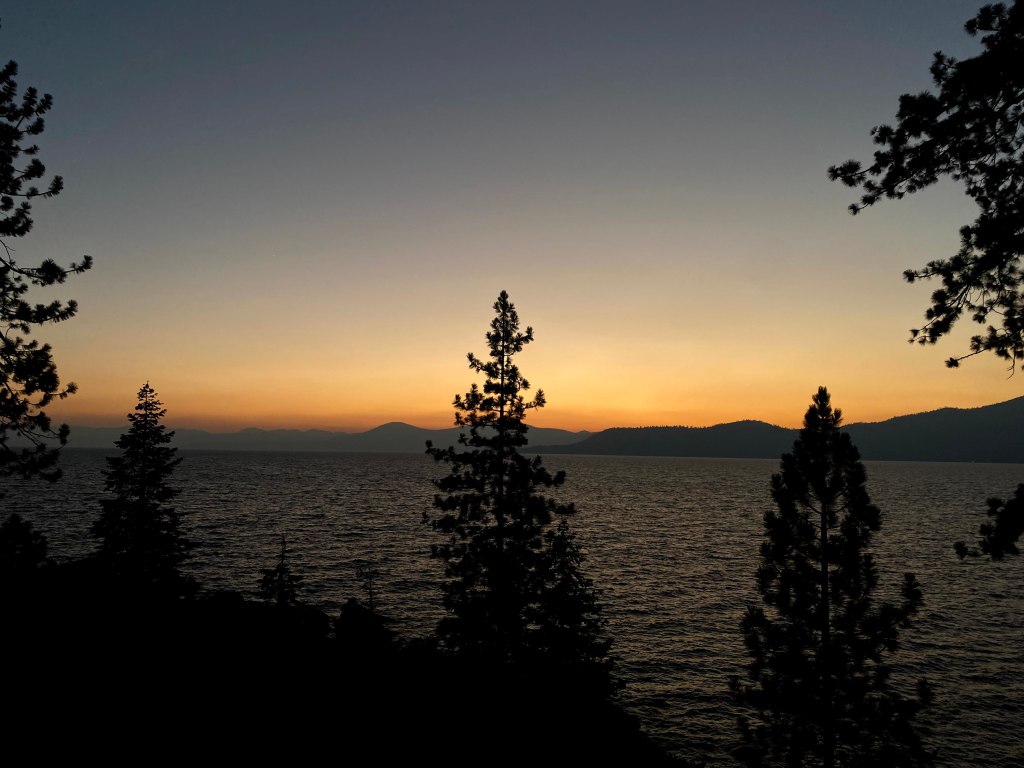by Luis González
I had the pleasure of working with Luis González when he interned as a law clerk in our office last summer. Luis is currently a student at Vermont Law School, but as a San Diego, Cali resident, Luis has had a long history with water and some great ideas of how to conserve it while also making it more user friendly. As the world population grows and the demand for water along with it, we need to look closely at how to protect the source — both ground and surface water — from contaminants, wasteful practices, and other water abuses. And what a great idea to look at water through an EJ lens since that is where many of the water abuses are happening — in EJ communities. No matter how grim the future of water can look sometimes, when I read articles like Luis’, I know the future is in good hands. Read on and enjoy. pam lazos 1.23.22
p.s. a note on the text — because of my wordpress naiveté, I was unable to figure out how to add the footnotes to this article. If you are interested in the legal citations, please leave me a comment in the chat and I will send you the article as a pdf. Sorry for the inconvenience. pl

A. Introduction
Federal and state actions are necessary ravines that feed into the river of environmentally just solutions. However, municipal and county governments have an important role that they too can play. To be specific, California’s local governments can employ ordinances like: Cincinnati’s law creating an environmental justice review board, and Baltimore’s ban on crude oil terminals. These two strategies could serve local California governments to mitigate contamination, protect some of California’s most vulnerable communities, and work towards comprehensive and impactful environmental justice solutions.
B. Background
As California becomes more and more dependent on its groundwater, the state must take steps to make sure that its potable water does not become more contaminated. At the moment, about thirty percent of California’s water comes from groundwater, but it is projected that that number will go up—as a result of climate change’s negative effects on both the amount of snowpack in California’s mountains, and reduction in the stream of the Colorado River (the other major sources of California’s water). California depends even more on groundwater when it comes to drinking water; the California Department of Public Health (CDPH) estimates that about thirty million residents (out of California’s thirty-nine million) depend on groundwater for at least part of their drinking water supply. Although many groundwater basins are already contaminated with pollutants, further contamination can lead to costly treatment systems to make the water potable. It therefore makes far more sense to take preventive steps to safeguard California’s water—rather than after-the-fact clean-up and remediation.
Local governments in California are important in this conversation about contamination prevention because California municipalities and county governments play a strong role in land-use decisions and water planning. Alongside water boards, federal and state agencies, and tribal governments, local governments set the water policy, and manage everything from delivery, water treatment, irrigation, etc. Some argue that California’s decentralized and fragmented water management (and government style) may lead to policy gridlock and inaction when it comes to water policy. However, California’s federalist-style government should be seen as an opportunity—it allows for a diffusion of responsibility—the passing of possibly unpopular (but helpful and necessary) laws from different levels of government. Furthermore, it allows for more voter participation from residents, and increases efficiency since responsibilities are delegated into more digestible and simpler tasks (since there are more people and agencies involved). As a result, California is uniquely and favorably positioned to pass legislation protecting its ground and drinking water.

C. Applying Solutions
a. Cincinnati’s Environmental Justice Ordinance
The first law that California’s city and county governments should look at is Cincinnati’s 2009 ordinance that looked to build on existing zoning requirements. Essentially this review board would look into environmental justice factors and assess whether new development projects would be overly harmful towards environmental justice communities. The review board would do this in two ways. First, it would collect data on chemicals, pollutants, cancer risk, etc. existing in an area and any new risks from future developments and then publicize that information for community members to see. Second, the Cincinnati law required that officials provide “culturally competent outreach, including language of translation and explanation of scientific and technical issues, meetings… [and] longer comment periods.” These adages were meant to increase communication and transparency between city officials and concerned community members.
Although the Cincinnati law only passed into law but was never enforced (due to vehement opposition from local businesses and lobbyists), the law is still significant as a model for future legislation. Cities throughout California, whether or not their groundwater is currently contaminated or not, would benefit greatly from an added level of review like this. It builds off of existing zoning infrastructure and adds a layer of review that centers the interests of low-income communities and communities of color. This form of review would not be unheard of from what is already in place, especially with the increased use of discretionary review, which permits local officials to review development proposals and attach conditions to approval. Discretionary review allows planning commissions to review individual projects and cases even if the use is allowed under the existing zoning ordinance. Adding a condition that would require developers and officials to review based on cumulative impacts and environmental justice issues would not be a stretch of existing uses of discretionary review already taking place in California. For example, the California Environmental Quality Act already encourages public debate on environmental aspects of projects. And conditions that have been imposed by governments previously have required: “planting of a large number of trees, construction of affordable housing, the payment of a traffic mitigation fee.”
b. Baltimore’s Crude-Oil-Terminal Ban
The second law that local governments in California should consider is Baltimore’s ban on crude-oil terminals. With this law, the City of Baltimore repealed and rewrote its zoning ordinance, effectively banning new terminals and prohibiting the expansion of existing terminals. The 2018 ban was a response to the heavy impact of existing crude oil terminals to low-income communities and communities of color, along with heavy environmental justice activism from community members.
Oil pumps, refineries, and terminals can be found throughout residential communities in California. For example, California beachgoers may recall an easy-to-spot oil pump jack located next to single-family homes in Huntington Beach. Similarly to Baltimore, municipalities and county governments in California can use their power in zoning to limit the expansion of oil terminals. By definition, zoning ordinances are a set of regulations that restrict what landowners can do with their property. And California municipalities have a history of zoning-out businesses that they find unpopular or unwanted; for example, two thirds of California cities prohibit Marijuana dispensaries even though smoking marijuana recreationally and medicinally has been legal in the state since 2016. This strategy of zoning out unwanted businesses can also be seen with prohibitions to adult entertainment businesses, where although cities cannot create an outright ban on the industry (due to First Amendment concerns), cities are permitted to enforce reasonable zoning laws that direct unwanted industries away from residential communities. So, similarly to how California cities use zoning ordinances to prohibit or discourage marijuana dispensaries or adult entertainment businesses, they too can use their powers in zoning to assure that vulnerable communities are not located next to oil or gas extraction or refinement sites.

D. Conclusion
This is by no means an exhaustive list of ordinances that California municipalities and counties should look at—they are not even the most drastic laws to consider. However, these laws are relevant because they do not depart significantly from what is currently in place in California or cities across the country, and their application would not be disproportionately difficult. Local governments in California should look towards Baltimore’s 2018 ban on crude oil terminals and Cincinnati’s 2009 environmental justice ordinance as models for how to take impactful steps towards environmental justice solutions and safeguard California’s water supply.

Luis González graduated from University of California, San Diego majoring in both Political Science and Ethnic Studies. They are currently a JD student at Vermont Law School where they continue to learn and write about environmental justice.











Hi Pam – we have similar challenges here – but California is 1.7 times larger than the whole of the UK. I’m not sure where irresponsible people are taking us – leaders of poisoning organisations, or country’s leaders … all self-interested – not interested in the rest of the world’s peoples. Cheers Hilary
LikeLiked by 1 person
That’s the sad truth of it, Hilary, because certainly there’s enough to go around. 🤨🤔💕
LikeLiked by 1 person
Thank you for the Environmental justice solutions to California 🌍
LikeLiked by 1 person
You are most welcome.
LikeLiked by 1 person
😊🌍
LikeLiked by 1 person
Of course! I hope they can be useful!
LikeLiked by 2 people
Yes. They are. You are welcome! 😊
LikeLiked by 1 person
Pam, thank you for posting this awareness making information from Luis!
Luis, keep on going! You are on a great track.
A true incentive for those that want to maintain the status-quo, is how they can turn yours and other environmental ideas into $$$$$!
Saving earth is noble. Saving humans from hideous cancers and deaths due to pollution is the way to go.
Now, how to lure everyone in?
Certain polices mean change. During the change could mean some go cold in the winter, or others don’t have enough electricity to live decent lives.
Creativity in implementation is needed.
LikeLiked by 1 person
It’s true, Resa. There are lots of ways to make money in service to the planet 🌎 and make sure everyone in every community is served if we just stop looking at the way it’s always been done and focus on the way it could be done. I’m holding out lots of hope for the next generation of environmental leaders like Luis! 🌹💗
LikeLiked by 1 person
Hi Resa,
Thank you so much! You’re definitely right about the troubles that might come from policy transition. I think having community-centered or person-centered persectives when implementing new policy, might ameliorate the struggles to communities in transition. Ethnic studies and critical race studies are two lenses that oftentimes apply this perspective. For example, before implementing any local bans on a industries, a person-centered review focuses on making sure those people displaced can find new jobs, homes, etc. quickly. It is definitely something that policy makers should always consider.
LikeLike
Hi Resa,
Thank you so much for the support! I’ll keep that in mind for future articles! I’m always a fan of creative solutions!
LikeLiked by 2 people
Hey Pam and Luis,
Thanks for taking the time to share this – very thought provoking.
I wrote a post about imidacloprid – one of the top-used insecticides (from the group of chemicals known as neonics) which targets nervous systems. Here’s a quote: “A Water Quality Criteria Report for Imidacloprid that was published by University of California (Davis) researchers in 2018 provided guidelines to the California Central Coast Regional Water Quality Control Board. The Californian researchers proposed safety limits that in the same ballpark as the Dutch numbers: 0.07 μg/L as the maximum acceptable (acute) concentration and 0.014 μg /L as the long-term (chronic) average limit.”
Source: https://greenstarsproject.org/2021/03/31/risk-benefit-analysis-bayer-imidacloprid-admire-sds-toxicity/
I actually wrote to the UC Davis researcher who conducted the study and asked what happened when the water board saw her recommendation and she said that she has no idea. Her role was to complete the report but she left UC Davis and had no idea (or perhaps no motivation) to follow up on it.
If the recommendations were really adopted by the board then imidacloprid use in CA would have been drastically reduced. No such action has happened despite the imidacloprid turning up in drinking water supplies way above the limits recommended by both the UC Davis and Dutch researchers.
“The UC Davis report listed a few imidacloprid measurements by the California water quality board. It is shocking how seldom imidacloprid has been quantified, considering that the numbers a”re not good: 9.14 µg/L imidacloprid was measured in the Santa Barbara County water supply – 45 times greater than the Dutch limit.”
I guess nobody in the CA water board has the cahones to take on Bayer and Syngenta?
LikeLiked by 1 person
I am so over Bayer, James! If it’s not neonicotinoids it’s this fresh hell of which you speak. Granted no one gets out of this life alive, but do we have to be walking around with pesticides and pharmaceuticals in our blood all lifetime long? The short answer I guess is yes. I’m reminded of how long it takes to debunk a false theory with fact-checking, etc., and how easy it is to just keep spreading the lies that these chemicals are at low enough levels that they won’t hurt anyone. 🙄 Has anyone done a cumulative risk assessment? No because you can’t control for it and the money makers know that without direct evidence to the contrary they can keep making their false claims while they ruin the planet in the process. They say knowledge is power but it usually only results in me sleeping worse at night. 😳
LikeLiked by 1 person
Hey Pam,
I think Bayer loves to hear that people are exhausted by it all – they wear everyone down with their tactics, as you point out.
You would think that it would be sufficient:
1. Researchers from University of California are commissioned by CA water board to conduct study.
2. Study recommends safety levels for imidacloprid. Recommendation matches pretty well with Dutch govt study.
3. Levels in current water supply are often many times higher than these limits.
4. However, the CA water board does nothing…
LikeLiked by 1 person
I’m sorry, James. It was just a momentary exhaustion. Nothing that an evening with Netflix can’t fix. I’ll hit it hard tomorrow. Frick Bayer. They killed our bees 🐝 repeatedly and with malice aforethought and for that they can never be forgiven. Unless, of course, they come clean and start acting like they give a 💩. 🙄
LikeLiked by 1 person
Oh – I’m sorry in turn – didn’t mean to make you feel guilty! But I’m glad you’re ready to fight for the bees and aquatic critters!
LikeLiked by 1 person
We all get a little burnout now and again. ;0)
LikeLiked by 1 person
Hi James,
This is honestly so helpful! I’m currently writing a student note that touches on the topic of pesticide reduction in farms close to residential communities (specifically around primarily Latinx and indigenous communities) so I’m going to do some more research on Imidacloprid and other neonicotinoids. Thanks for bringing up this information—it helps a lot!
LikeLiked by 2 people
🙏👍💃🏻
LikeLike
I’m very glad to hear that, Luis! If you want to get in touch for more info at any point you can contact me using the email or form here: https://greenstarsproject.org/contact/
Cheers!
James
LikeLiked by 1 person
It is an excellent effort to do something in this somehow critical condition! Thank you, dear Pam, for letting us know thereabout.
I might ask for your attention on one of my posts; I just thought you might be interested. Have a good start to the new week.
https://lampmagician.wordpress.com/2022/01/15/seaspiracy-a-look-behind-the-net-curtain/
LikeLiked by 2 people
Thanks for sharing Luis González’ proposals. Here’s hoping that if such a law could be passed in California, we would be able to enforce it despite opposition from local businesses and lobbyists.
LikeLiked by 2 people
Hi, Rose! 🌹
LikeLiked by 1 person
Hi Rosaliene,
I’m glad you enjoyed the article! I’m writing a note for a law review article and this topic is particularly sticky, I’m still trying to find ways of incentivizing businesses so they don’t argue too hard against environmental justice policies. Lobbying from local businesses is definintely a struggle to watch out, I’m still hopeful there’s a balanced solution out there though!
LikeLiked by 1 person
A fascinating post my lady Pam. What we said a few comments ago.. One blog at a time, showing what can be done xxx
LikeLiked by 4 people
You said it here first, sister! ♥️
LikeLiked by 3 people
My darling YOU did in every way. Keep at it xxxx
LikeLike